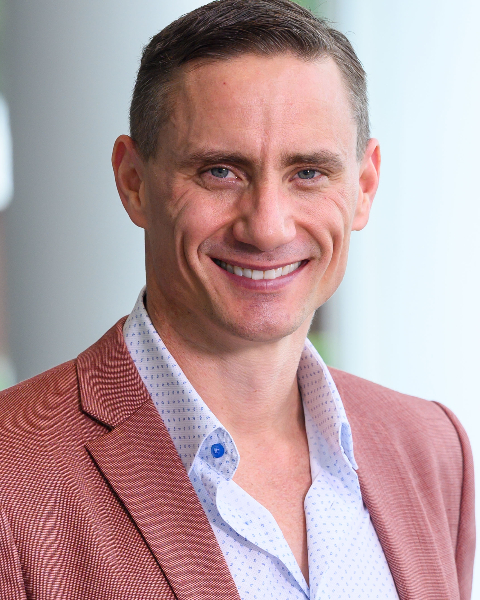PQA 10 - PQA 10 Head & Neck Cancer and Health Services Research/Global Oncology Poster Q&A
3693 - Sexual Health, Facial Appearance and Appearance Distress in Patients with Human Papillomavirus-Associated Oropharyngeal Cancer (HPVOPC) Patients Undergoing (Chemo)Radiation (CRT/RT): Final Results fro
Wednesday, October 2, 2024
10:30 AM - 11:45 AM ET
Location: Hall C
Screen: 22

Lachlan McDowell, PhD, MBBS, FRANZCR
Princess Alexandra Hospital
Woolloongabba, QLD
Presenter(s)
L. J. McDowell1, K. Gough2, T. Fua2, A. Coleman2, A. Drosdowsky2, D. Rischin2, and J. Corry3; 1Princess Alexandra Hospital, Brisbane, QLD, Australia, 2Peter MacCallum Cancer Center, Melbourne, VIC, Australia, 3Genesiscare, St Vincents Hospital, Melbourne, Australia
Purpose/Objective(s): This study constitutes the final analysis of self-reported sexual health, facial appearance, and appearance distress outcomes in HPVOPC patients treated with primary CRT/RT from before to 24 months after CRT/RT. Materials/
Methods: Eligible patients had HPVOPC and were planned for curative CRT/RT. Patients were assessed before treatment (BL), week 7 of treatment (W7), and 3, 12 and 24 months after CRT/RT (3m, 12m and 24m). Study outcomes were assessed with the EORTC SHQ22 and relevant FACE-Q modules (Appearance and Appearance distress). Linear mixed models (LMM) were used to analyse outcome data.
Results: 100 eligible patients were enrolled: median age 61y (range 44-79), 87% male, 77% partnered, 95% heterosexual, stage I disease (52%) and treated with CRT (97%). At 12m and 24m, 91% and 77% completed the SHQ22, and 93% and 74% completed the FACE-Q modules. Analysis of BL SHQ22 scores through 12m (primary analysis) indicated that sexual satisfaction, libido, sex life affected by fatigue, sexual activity affected by treatment, confidence in an erection, and feeling less masculine were significantly impacted at W7 and 3m after CRT/RT (>10-point difference, all p<0.001). Sexual satisfaction, libido, and sex affected by fatigue all returned to near-BL levels at 12m (<5-point difference, all p>0.10). Score differences on the remaining items were still significant at 12m (all p<0.05). Score differences between BL and 24m, and 12m and 24m (secondary analysis) indicated minimal differences between both sets of scores on most SHQ22 scales/items. However, at 24m, men were still feeling less masculine compared with BL (-9, 95% CI: -15, -2, p=0.001), with little change between 12m and 24m (0, 95% CI: -6, 7, p=0.89). Conversely, on average, the impact of treatment on sexual activity decreased between 12m and 24m, and the difference between scores at BL and 24m was not significant (-5, 95% CI: -14, 4, p=0.26). Similarly, on average, differences in erection confidence at BL and 24m was not significant (0, 95% CI: -10, 9, p=0.92). Score differences on sexual pain and insecurity with partner were minimal at all follow-up assessments through to 24m (<5-point difference, all p>0.10). LMM results for FACE-Q module scores BL through 24m indicated worse appearance distress at W7 (-10, 95%CI: -16, -4, p<0.001), but not 3m (-5, 95% CI: -11, 0), 12m (-2, 95% CI: -8, 4) or 24m (-3, 95% CI: -10, 3) compared to BL. In contrast, appearance scores were relatively stable from BL to 24m (global p=0.12).
Conclusion: By 24m after RT/CRT, treatment affecting sexual activity and erection confidence items had shown ongoing improvement from 12m to 24m to recover to BL scores. Appearance distress, but not facial appearance, was worse in the last week of treatment but showed improvement by 3m.
Purpose/Objective(s): This study constitutes the final analysis of self-reported sexual health, facial appearance, and appearance distress outcomes in HPVOPC patients treated with primary CRT/RT from before to 24 months after CRT/RT. Materials/
Methods: Eligible patients had HPVOPC and were planned for curative CRT/RT. Patients were assessed before treatment (BL), week 7 of treatment (W7), and 3, 12 and 24 months after CRT/RT (3m, 12m and 24m). Study outcomes were assessed with the EORTC SHQ22 and relevant FACE-Q modules (Appearance and Appearance distress). Linear mixed models (LMM) were used to analyse outcome data.
Results: 100 eligible patients were enrolled: median age 61y (range 44-79), 87% male, 77% partnered, 95% heterosexual, stage I disease (52%) and treated with CRT (97%). At 12m and 24m, 91% and 77% completed the SHQ22, and 93% and 74% completed the FACE-Q modules. Analysis of BL SHQ22 scores through 12m (primary analysis) indicated that sexual satisfaction, libido, sex life affected by fatigue, sexual activity affected by treatment, confidence in an erection, and feeling less masculine were significantly impacted at W7 and 3m after CRT/RT (>10-point difference, all p<0.001). Sexual satisfaction, libido, and sex affected by fatigue all returned to near-BL levels at 12m (<5-point difference, all p>0.10). Score differences on the remaining items were still significant at 12m (all p<0.05). Score differences between BL and 24m, and 12m and 24m (secondary analysis) indicated minimal differences between both sets of scores on most SHQ22 scales/items. However, at 24m, men were still feeling less masculine compared with BL (-9, 95% CI: -15, -2, p=0.001), with little change between 12m and 24m (0, 95% CI: -6, 7, p=0.89). Conversely, on average, the impact of treatment on sexual activity decreased between 12m and 24m, and the difference between scores at BL and 24m was not significant (-5, 95% CI: -14, 4, p=0.26). Similarly, on average, differences in erection confidence at BL and 24m was not significant (0, 95% CI: -10, 9, p=0.92). Score differences on sexual pain and insecurity with partner were minimal at all follow-up assessments through to 24m (<5-point difference, all p>0.10). LMM results for FACE-Q module scores BL through 24m indicated worse appearance distress at W7 (-10, 95%CI: -16, -4, p<0.001), but not 3m (-5, 95% CI: -11, 0), 12m (-2, 95% CI: -8, 4) or 24m (-3, 95% CI: -10, 3) compared to BL. In contrast, appearance scores were relatively stable from BL to 24m (global p=0.12).
Conclusion: By 24m after RT/CRT, treatment affecting sexual activity and erection confidence items had shown ongoing improvement from 12m to 24m to recover to BL scores. Appearance distress, but not facial appearance, was worse in the last week of treatment but showed improvement by 3m.
